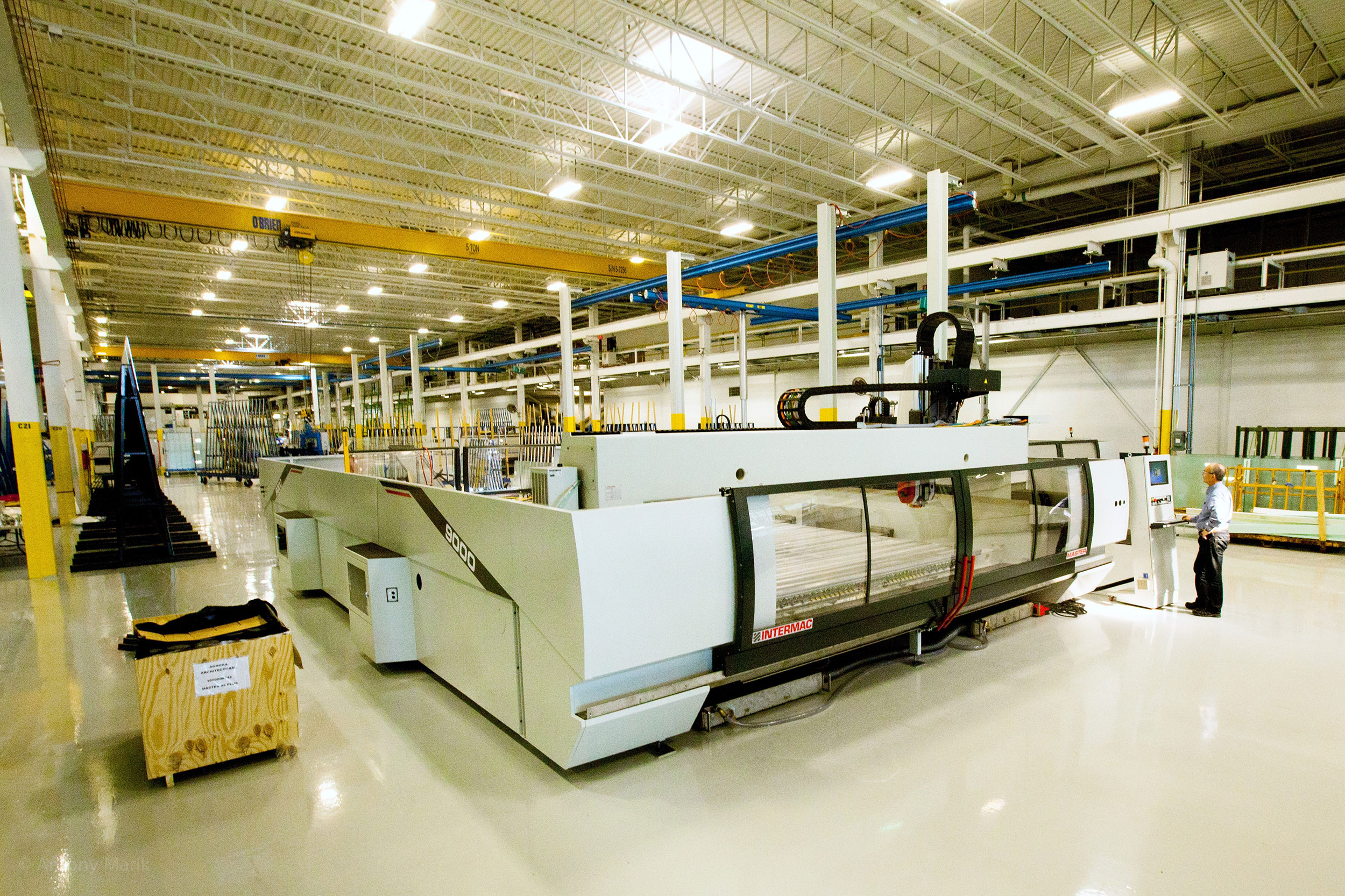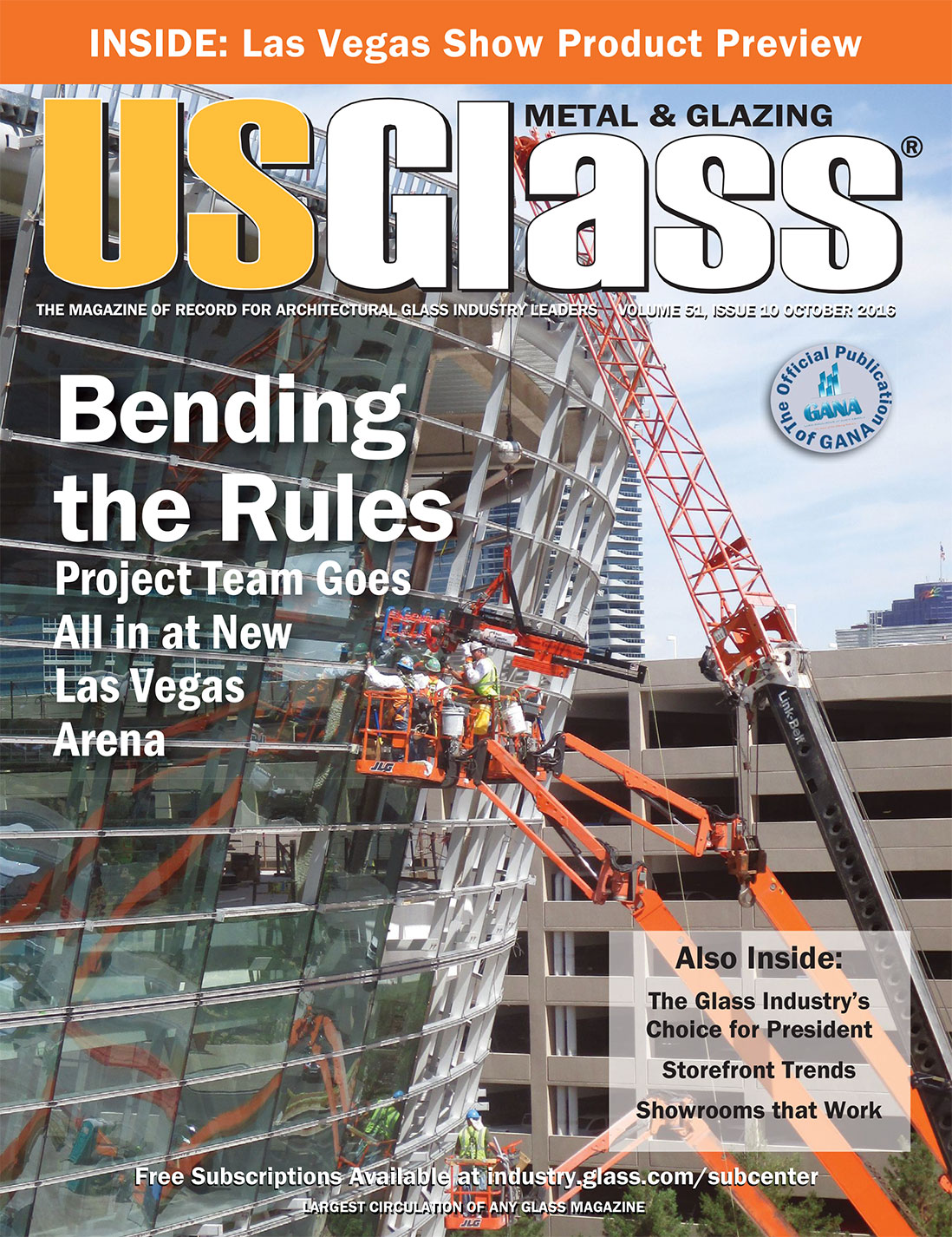USGlass Magazine Editor Ellen Rogers interviews Richard Wilson on how the increasing sizes of glass will impact glass fabrication and its machinery.

AGNORA’s Intermac 9000. AGNORA is able to temper, machine, laminate and insulate various thickness of glass up to 130″ x 300″.
From the article:
When it comes to oversized glass production, it’s an all-or-nothing process. “You don’t just buy one piece of equipment. You have to have the capabilities for the entire fabrication process,” says Richard Wilson, president of Architectural Glass North America (AGNORA), based in Collingwood, Ontario. “If you’re going to produce oversized glass, [all of your equipment] has to be bigger.” Oversized or jumbo-sized architectural glass—often in spans of more than 20 feet—is quickly growing in popularity. And with all the excitement, fabricators may be quick to express interest in adding these oversized lites to their operations, but it’s neither a fast nor easy investment. A lot of time and careful consideration are necessary to ensure a company has the needed capabilities, such as machinery and equipment, among other details.
For fabricators venturing into this market, purchasing equipment requires careful consideration. One point to keep in mind: plan to custom order. “You’re between six months and a year out before you receive anything,” says Wilson. “We put in an 8-meter digital printing line, and it took over a year from the time we started the process of ordering to getting it all set up. You just don’t do it overnight.” He adds that given the long lead times, his company is even purchasing back-up equipment, because if something happens to one line, replacing it takes a significant amount of time. “We have four CNC lines just to deal with the oversized glass,” Wilson says. “We’re buying multiples of each to have as a back-up.”
Wilson stresses that the layout of the plant, and having the space to move around, are crucial. “If you don’t have the infrastructure, it makes it difficult to increase the fabrication sizes,” he says.



